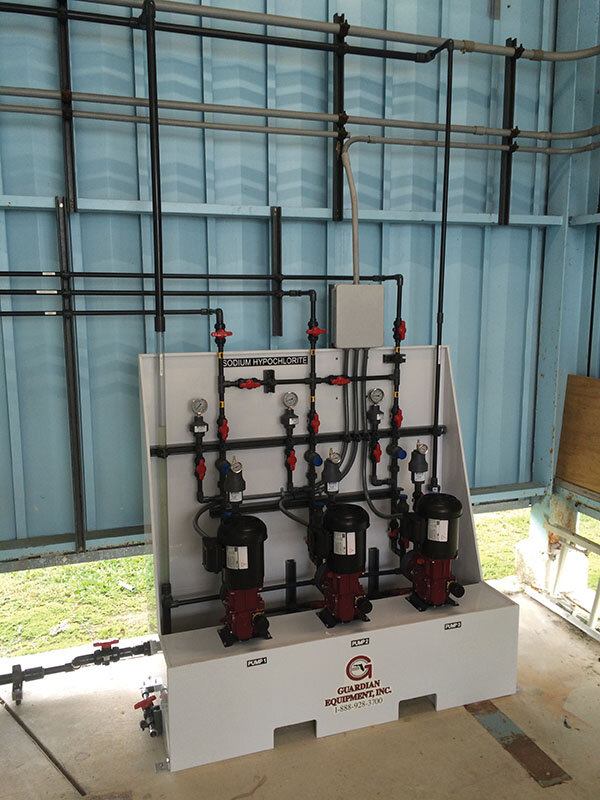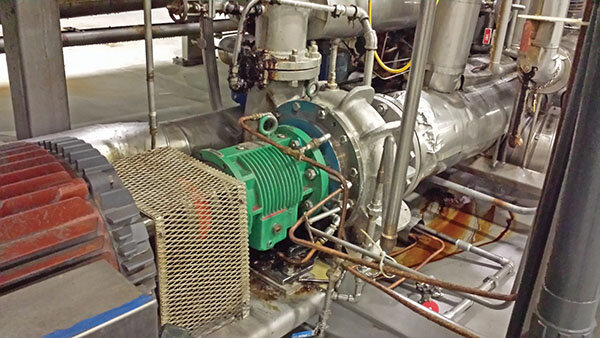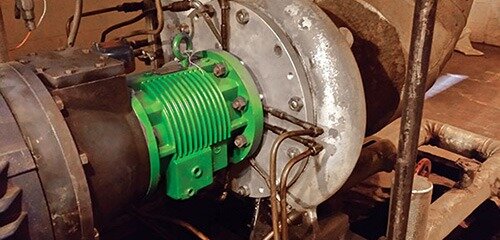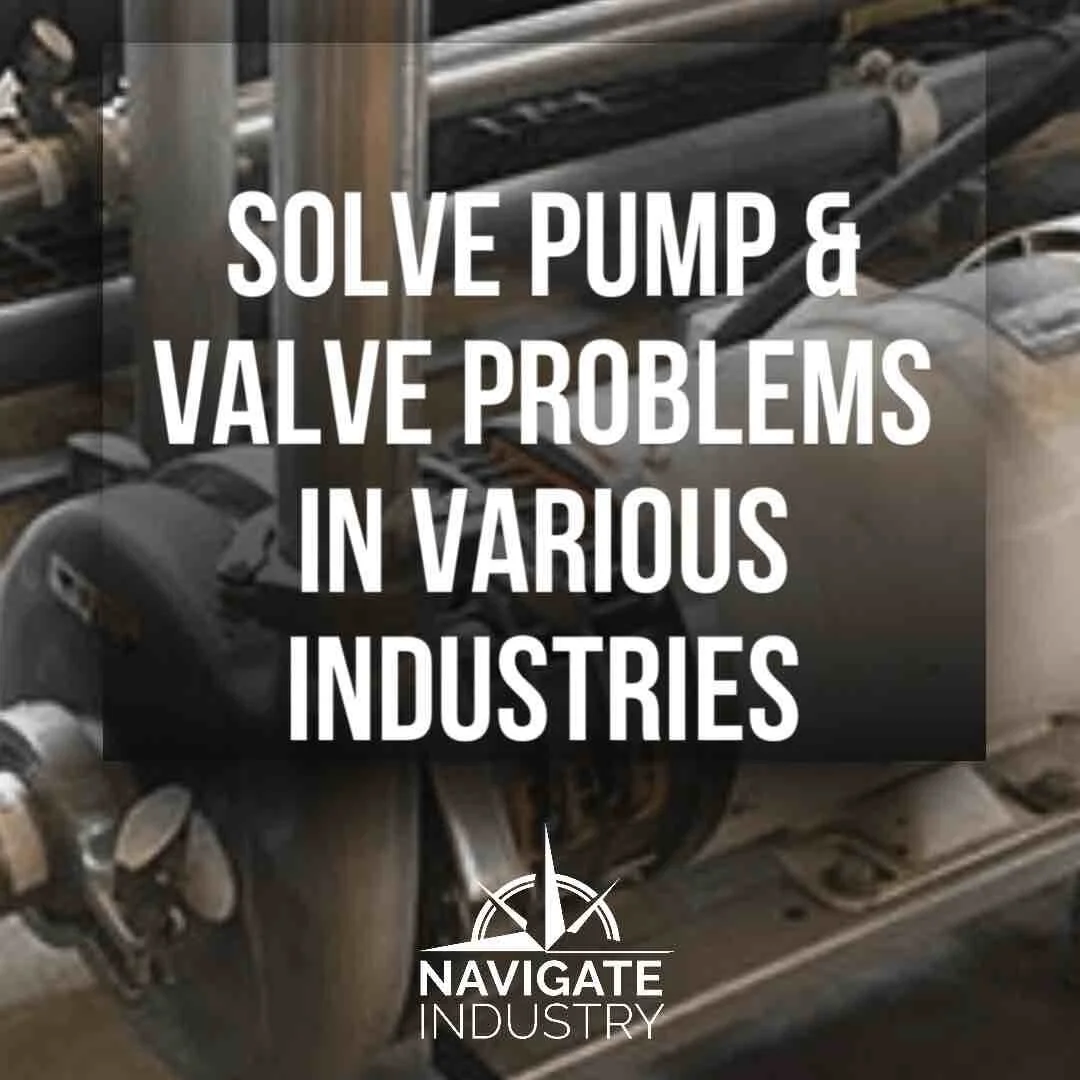Avoid These 6 Chemical Pump Maintenance Mistakes
/Marrying a specific product with the right equipment is crucial in chemical processing pump maintenance. Here are the top six mistakes to avoid and the top 10 tips for proper chemical pump maintenance.
By Michelle Segrest, Navigate Content, Inc.—Reporting for Maintenance Technology Magazine
The biggest problem a pump operator can face, especially when explosive, corrosive, and abrasive chemicals are involved is not having a structured maintenance program, according to Tim Mann, president of TKM Industries Inc., a Marietta, GA-based manufacturer of custom-engineered metering pumps for the chemical, wastewater, and mining industries.
“Sometimes the attitude is…if it works, don’t fix it,” Mann said. “This is absolutely the wrong approach. When working with chemical pumps, especially metering pumps, you are always pumping a specialty chemical. You have to be mindful of the product you are pumping because every chemical gives you a different problem. Many of them can be reactive to heat and pressure, for example. You have to design your maintenance program around those specifics.”
Chemicals that are non-viscous and non-corrosive may only require minimum scheduled maintenance, while those that are more aggressive require more frequent maintenance. “It’s important to consider the pump and the product you are pumping when designing the maintenance program,” Mann said. “It’s not one-size-fits-all. Every chemical creates a different challenge.”
Top 6 Chemical Pump Maintenance Mistakes
To avoid some of the most common maintenance issues that occur in chemical-processing pumping systems, EnviroPump & Seal Inc.’s Monik Gandhi suggests insisting on a proper design from the beginning, ensuring a proper installation, and maintaining the pumps according to a strict schedule. EnviroPump & Seal Inc., Marietta, GA, is a manufacturer of ANSI process pumps and mechanical seals.
The top six mistakes made in maintaining chemical pumps include:
Faulty or incorrect design. Verify the manufacturer’s recommendation using their pump curves and pump data sheets prior to purchase, Gandhi suggested. “Verify materials of construction used in the pump for any incompatibility. If the manufacturer has a distributor or manufacturer’s representative in the area, use them as a third party to verify the conditions of service required versus the pump curve and data sheets provided by the pump manufacturer.”
Manufacturing error. Look for pumps with the longest warranties or pump manufacturers with good references. “Those manufacturers that offer the longest warranties generally have more procedures in place to assure that the pump runs properly and efficiently for a longer time,” Gandhi said. “The standard pump warranty is for one year. Look for those manufacturers that offer warranties that are longer than that. The longest warranty currently available on a pump is three years.”
Assembly/installation errors or defects. Hire a millwright, or use the millwright who is staffed by the customer. “Follow all the manufacturer’s recommended installation and startup procedures,” Gandhi suggested. “Pay special attention to alignment, rotation, shimming, etc.”
“Live” process conditions different from base design. “This is a difficult problem to solve,” explained Gandhi. “It is looked at on a case-by-case basis. In some instances, the impeller trim can be changed, or the speed of the pump (among a list of other things). In other instances, the process flow is too different from the designed pump, and the pump must be replaced with a pump which can attain the desired conditions.”
Maintenance deficiencies and procedure neglect. Keep a daily check on all maintenance items (even those with instrumentation designed to alarm at a central location), Gandhi recommended. These items can include considerations such as cooling-water flow and basket-strainer cleaning.
Improper operation or operation not intended for the pump. Certain pump technologies can be used for only certain process streams, Gandhi said. “For instance, if you want a high turndown, you should use a pump which can acquire that, such as a peristaltic pump or a solenoid pump. If you want a pump that can pump very viscous materials, then a positive-displacement pump is the right solution. If there is high heat involved, then cooling accommodations must be made for the pump seals. If the wrong technology is used for the wrong process, the pump will never perform as needed by plant personnel. It is a good idea to do some industry research and/or rely on someone who is versed in the technologies to steer the customer toward the proper solution.”
Marrying Chemicals with the Right Equipment
All chemicals present specific challenges, making the marriage of the pump and the product it’s pumping of utmost importance, Tim Mann stated.
“Chemicals react differently at different speeds and pressures, and they also react differently depending on the type of pump,” he explained. “If you are using a progressive cavity or gear pump, for example, when they are spinning fast they create heat. Some chemicals don’t react well to heat, or they may be shear sensitive. By turning that kind of pump, you can create another kind of problem. The heat can cause the chemical to break down and, when this happens, it reacts in different ways. It could become sticky or more viscous or more abrasive, or less effective…it just depends on the chemical.”
Mann described a situation years ago when one of his customers made a slight formulation change to a chemical it was pumping. “We were using a gear pump that normally would last at least two years without any issues. This slight change caused the pump to break down at an alarming speed. We worked hard to figure out the problem and finally learned that the change in the chemical had caused it to become more reactive to heat, which was causing abrasion, which was wearing on the pump. We had to select a different piece of equipment and totally redesign the system to suit the product. Then the maintenance team had to determine a new maintenance schedule.”
According to Mann, the marriage of the pump and the chemical also relies on a strong partnership between the manufacturer and the operator.
“The technologies are changing so fast, and the chemical companies are always looking for an edge to make a better chemical,” he said. “Just a little bit of change in the formulation will cause maintenance and wear issues you didn’t expect. We work closely with the customer to make sure we understand the chemistry and which pump will work best with it. If I have any doubts, I always recommend a different pump to the customer. Marrying the equipment with the chemical is essential. If you don’t do it right, you are setting yourself up for failure.”
That symmetry extends to the components as well.
“It’s not just the pump,” explained Mann. “You have to also ensure the piping is running properly. The valves may need pulsation dampeners or relief valves. The pump requires maintenance, but so do all the other components. You have to be sure they are all functioning properly.”
Other considerations come into play. Some chemicals may create an off-gassing effect or introduce vapor in the lines, which can cause blockage. If vapor lock occurs, the pressure-relief valve must be working properly or the pump will be damaged or destroyed, Mann said.
Chemical Pump Maintenance Best Practices
There is much education and critical research needed to maintain chemical-processing pumps. Chemicals are used in a variety of pumping applications, including wastewater, water, food and beverage, pulp and paper, oil and gas, pharmaceutical, and almost all other processing industries. The details matter, said Mann.
“When people talk high-tech, they think iPods or iPhones or electronic gadgets,” Mann said. “The chemical industry is very high tech and cutting edge. Chemicals have become much more active. Everyone is looking for an added advantage. When they do this, they often change the chemical. Sometimes the chemical companies provide the equipment because it’s always changing.”
This requires asking detailed questions, such as:
What is the viscosity?
What is the compatibility of materials?
What is the specific gravity?
Answers to questions such as these can help to determine the right pump for the application. This leads to proper preventive-maintenance programs.
“You have to know your chemical,” Mann reiterated. “Customers and users should share all the information they can with the manufacturers. It’s a two-way street. We can’t walk in and tell the customer we understand everything about their chemical until we’ve taken the time to learn their chemical. At the same time, they don’t know 100% if your equipment is going to work to move that chemical unless they fully understand the type of pump and everything about it. In a metering pump, for instance, maybe you need a chemical that is more abrasive, so you want to use a harder metal component. This could increase the cost. It’s important to have this communication. It will save you unplanned maintenance down the road.”
It’s always a tradeoff between scheduling cost and time, Mann said.
“Some companies specialize in pumping certain chemicals. Some specialize in slurries. Others may pump a very clean, non-viscous material, close to water. Our plunger pump can pump very viscous materials, for example. Polymers are everywhere. But polymer is a very generic term. The type of polymer and the viscosities can vary greatly. We know we can pump this type of chemical without a problem. So some companies come to us for that specific reason.”
While the specifics are important, there are some common preventive-maintenance best practices, Gandhi said. “There are many things maintenance personnel can perform as preventive maintenance for the pumps in service as well as any spare units that may be in storage,” he explained. “Spares should be manually turned once every few weeks, keep all moving parts lubed to prevent lock up and rust.”
In Gandhi’s opinion, the most overlooked preventive-maintenance practice is to use common sense and all your senses.
“For a few minutes every day, it helps if a maintenance worker looks at the pump for items such as vibration or leaks, while listening to the pump for items such as cavitation or misalignment,” offered Gandhi. “Most of the issues that can arise with pump maintenance can be caught ahead of a catastrophic failure if the pump is monitored closely. In addition to eyes and ears, there are many forms of instrumentation that can remotely monitor critical elements of the pumping system.”
Technology, Tools & Tips for Chemical Pumps
Mann and Gandhi recommended taking advantage of the many tools available to help with chemical-pump maintenance.
“There is a plethora of instrumentation that can help monitor your pump,” Gandhi said. “The most catastrophic pump failures can be caught before they become fatal to the pump. In addition to instrumentation, a daily visual/auditory check of all rotating equipment will increase pump life because the evaluator will see a problem when it is still manageable instead of when it becomes out of hand and the pump needs to be replaced.”
It’s important to use instrumentation. However, users should not to rely too much on technology, Mann suggested. “You can use a pressure gage or flow meter, but always feed back into the DCS or SCADA system and use the information to do your statistical process controls to [identify] your maintenance issues. Sometimes alarms go off so much and they are ignored and you don’t even hear them anymore. You see this all the time. In the control room an alarm goes off and the guy just reaches over and kills the alarm.”
Mann offered these additional 10 tips for proper chemical pump maintenance:
Ensure everything is working properly. “Routine checks make all the difference,” he said. “If you just follow the procedures, the equipment will last much longer. Less work, less money, less time. All good.”
It only takes a minute to look at a gage or a pressure valve, so do not overlook this important step.
Always make sure your safety procedures are in place and are followed.
Be sure you have good preventive maintenance (PM).
When you have shutdowns, make sure you properly clean the pumps and pipes.
Make sure you are using good parts—the recommended parts—and that you have spares on hand.
Take care of all the components. Always be ready to realize that it’s not just the pump, it’s the entire process line that needs maintenance.
Have a checklist. If plants are running well, personnel generate good checklists and they follow the checklists. This will save you time and money and the equipment will run more smoothly. “PM doesn’t have to mean you have to tear the equipment down 100%,” Mann said. “PM may be just checking to make sure the oil levels are correct or everything is working. You may look at a pressure gage and everything is working fine but the pump has to work harder to keep the same pressures.”
Avoid complacency. Is someone checking to be sure the filter baskets are being cleaned as scheduled? Those kinds of small things can cause big problems. Some people don’t think they need a pressure-relief valve, so they just take it out or never check it because it always works.
Don’t cut corners. Pay attention to the details.
“In the end, it is common sense,” Mann said. “It’s putting the procedures in place, and then following them.”
Mann described how overlooking something simple can cause dangerous problems when pumping chemicals.
“When I first started working in the industry, I was in a plant and an operator said he needed to change the filters,” Mann explained. “I was looking at it, and the gage was reading 50 psi. I asked him if we needed to relieve the pressure. He said no, because that gage doesn’t work… ‘It’s never worked,’ he said. I was skeptical enough that I backed up. He opened the filter and a chemical came pouring out and totally drenched him.
Fortunately it wasn’t an aggressive chemical, but it could have been. It was all over him. If he had checked the gage to see if it was working, and if he had been cleaning the filter baskets regularly, just routine maintenance, this would have been avoided. He did everything wrong. And he learned the lesson the hard way. It could have ended really badly. The only thing he did right was he was wearing safety glasses. The chemical ruined his clothes, but he was so lucky.”
Gandhi emphasized this point when he described a challenging maintenance issue.
“At one plant the seals on the centrifugal pump would continually fail within a week,” Gandhi said. “The pump was moving 450-degree thermal oil. The seals would overheat, and eventually fail. We decided to go with a Plan 52 cooling arrangement. We put cooling jackets on either side of the seal, as well as injected a barrier fluid (cooling as well) in between the seals. This greatly increased the run-time between failures for this particular plant.”
When working with chemicals, OSHA requires that every chemical supplier provide a Materials Safety and Data Sheet (MSDS). These can also be found online and will tell you whether a chemical is harmful/corrosive and provide additional information. This will help the operators understand the chemicals and their potential hazards, but maintenance plans should be customized and flexible, Mann stated.
“A chemical pumping-maintenance plan is not something you create and then it’s good forever or works for every piece of equipment,” he said. “It’s always changing. In most plants, the chemistry is constantly changing. Everyone is always looking for a better way. You can’t create a maintenance plan and put it on the shelf and forget about it. It’s not that simple.”
Mann recommends creating a good work history to avoid reinventing the wheel on common problems. “You may fix one problem and create two more,” he said. “And, if it’s a really common problem, then you are not really fixing it.”
Michelle Segrest is President of Navigate Content, Inc., a full-service content creation firm. She has been a journalist for more than three decades and specializes in covering the people and processes that make a difference in the industrial processing industries. Contact her at michelle@navigatecontent.com
















